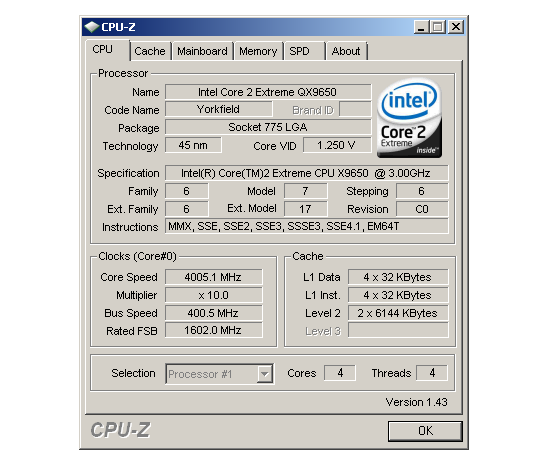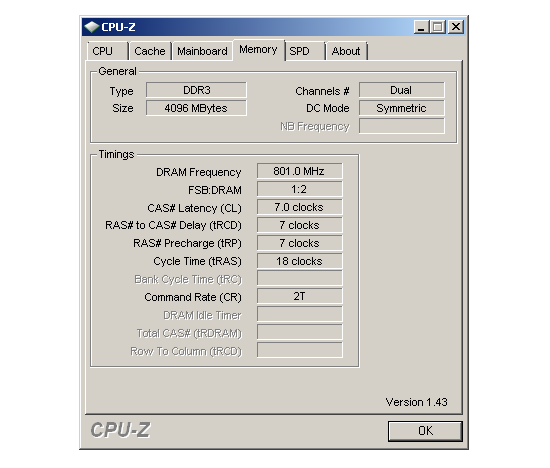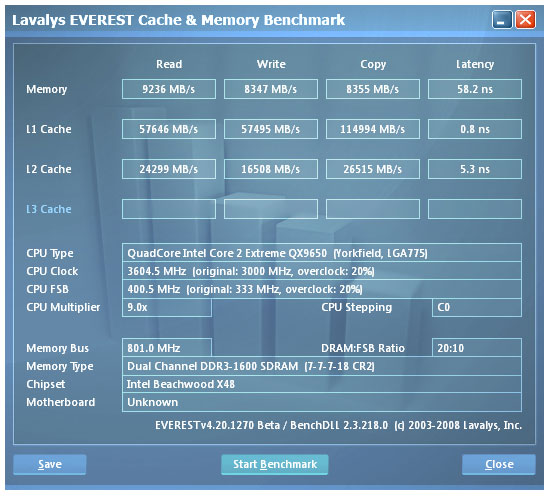MSI X48 Platinum: Four PCI Express x16 Slots to go Please....
by Kris Boughton on January 31, 2008 7:15 AM EST- Posted in
- Motherboards
A Preliminary Look at Overclocking Results
Once we were able to overcome our initial difficultly clocking our quad-core QX9650 by manually adjusting the CPU's GTL voltages, we found that the board responded well to our demands for more speed. Our focus was on achieving a balanced, stable overclock at 400MHz FSB, using the highest multiplier that the board's power circuitry and our processor could reasonably handle. In the end we settled on 10x for an even 4GHz - this placed our memory at DDR3-1600 using the 2:1 divider. Although not reported by CPU-Z, our full-load CPU voltage at this speed was about 1.28V and the X48 Platinum had no issues supplying the necessary current in a stable fashion.

Our memory timings ended up being a little looser than we would have liked. After 2.00V the board's next higher memory voltage setting was 2.17V, a little more than we were willing to give our expensive DDR3 memory simply for the purpose of setting CAS 6 instead of CAS 7. We have already discussed with MSI the need for finer fidelity when setting a DRAM voltage above 2V.

Memory read performance is certainly on par with what we expect for our settings. We are able to determine that tRD is being set to 7 by the board at an FSB of 400MHz, two whole clicks looser than we would have liked when it comes to X48. This along with setting 1N would help the memory read performance to easily eclipse 10GB/s. Write speeds are also a little low; later we were able to determine that the write recovery time (tWR) we set in BIOS at 10 clocks was being ignored and the board was defaulting to 21T. Rest assured minor problems like these will be corrected before a shipping BIOS is released.

Adding options for tRD (MCH Read Delay) and a couple other key memory timings will go a long way improving the already good memory latency time. It should be possible with a little tuning to take this number below 50ns. This is where Intel systems start to feel truly fast. We look forward to working closely with MSI in making this possible.










21 Comments
View All Comments
Orthogonal - Thursday, January 31, 2008 - link
[quote]Adding options for tRD (MCH Read Delay) and a couple other key memory timings will go a long way improving the already good memory latency time.[/quote]I would hope that everyone in the industry read your article on the Asus X48 board with adjustable tRD to realize how important this will be to the enthusiast community. If you keep pushing, I imagine most of them will capitulate